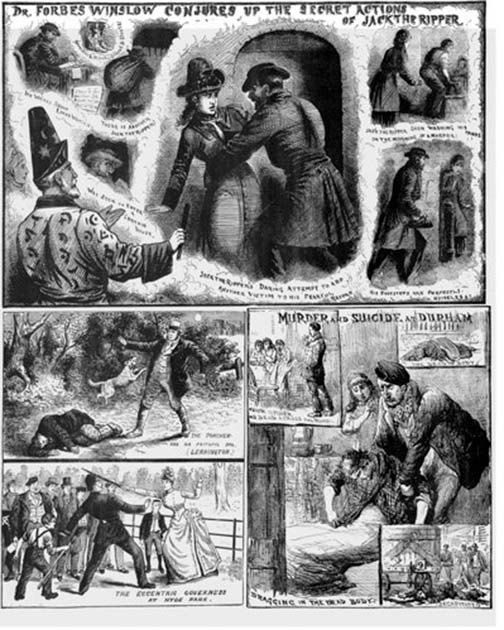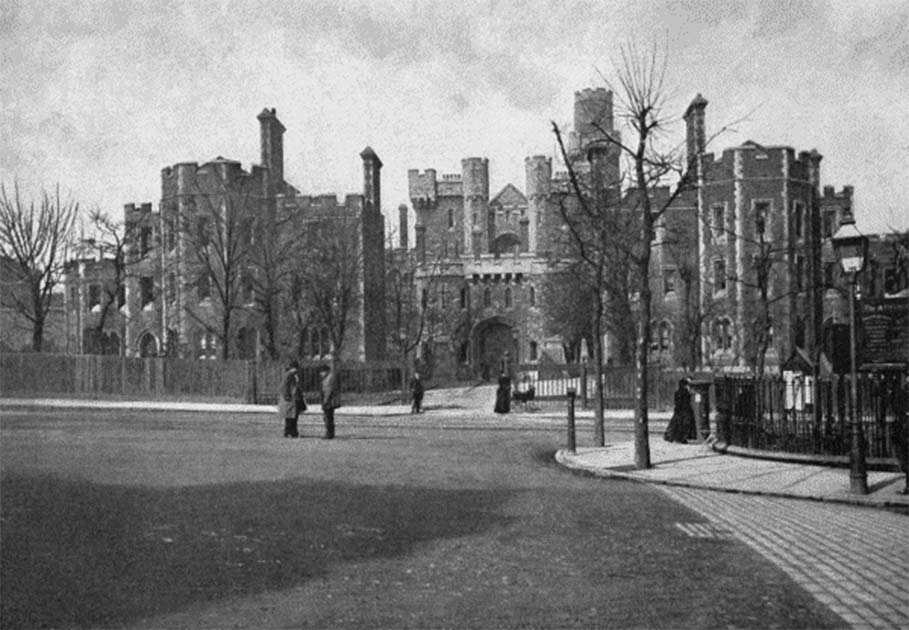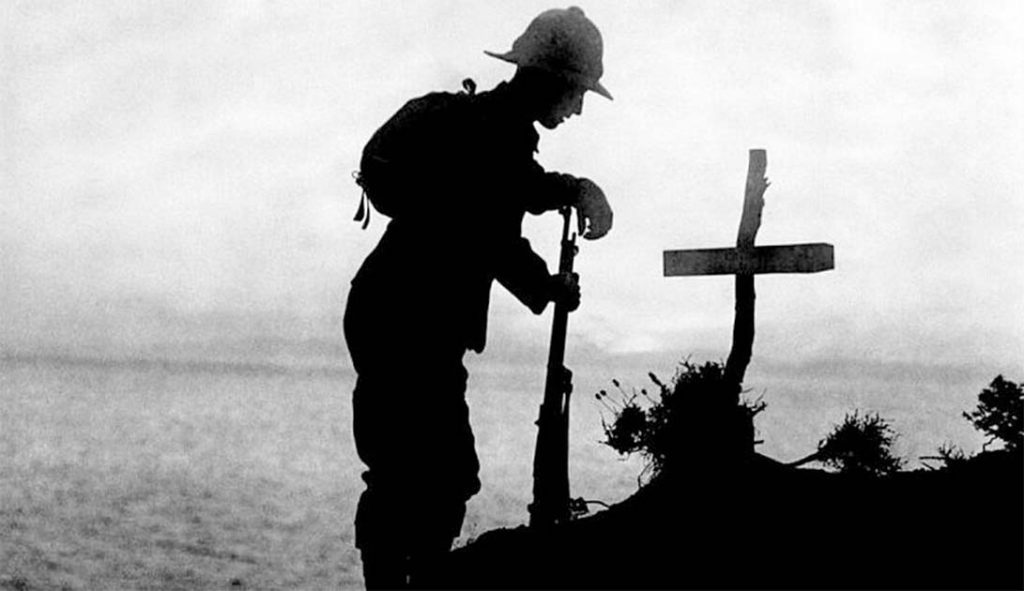In the late 19th century, an extraordinary case captivated Victorian England, shedding unwelcome light on the dark depths of human nature. At the center of the storm was Robert Coombes, a seemingly ordinary 13-year-old boy from East London.
In a tale that shocked society, Robert was accused of a heinous crime that defied comprehension. The details surrounding the case, from the gruesome discovery to the trial that followed, challenged notions of childhood innocence, and raised unsettling questions about the limits of compassion and the fragility of the human mind.
Was Robert Coombes bad to the bone, or was he mentally ill?
Who was Robert Coombes?
Robert Coombes was born in Bethnal Green in London on 6 January 1882. He was the eldest son of Robert Coombes Senior, a steward on a transatlantic steamer, and Emily Harrison Coombes, whom he had married in 1878. His brother, Nathanial Coombes, was born in 1883.
Coombes didn’t have an easy life as a child. He had been a forceps birth which had left visible marks on either side of his head. At the age of three, he began suffering terrible migraines and doctors advised that he never be struck on the head (disturbing advice in and of itself).
Around the same time, his family moved to Liverpool and stayed with relatives through 1885 and 1886. They then moved back to London in 1888 but his father, who was often absent anyway, stayed in Liverpool. During this time, the family doctor began prescribing the younger Coombes potassium bromide, a sedative, for Robert’s headaches.

The move back to London meant the six-year-old Robert Coombes was exposed to the Whitechapel murders and the stories surrounding Jack the Ripper. The young boy became fascinated with all things murder and macabre and was obsessed with the cheap, sensationalist papers of the time, penny dreadfuls. His parents didn’t discourage his morbid curiosity. Something his mother would later regret.
As children both the Coombes boys attended several different schools. Robert in particular was singled out as an exceptionally clever boy and a good student. Their school records were marred by near-constant absences, however.
Robert left school at 11 years old and started work as a plater at the local dockyard. His obsession with murder continued throughout his childhood. In 1894 at the age of 12, he traveled alone to watch the trial of the murderer James Canham Read, the “Southend Murderer”.
The Plaistow Horror
By 1895 both Coombes boys had begun to earn themselves reputations as troublemakers, but few could have predicted what happened next. On Friday, July 6, 1895, Robert the elder left the family home as per usual for work. He was unsure how long he’d be gone but left the boys with enough money to tide the family over until his return.
- Lizzie Borden Took an Axe… or Did She?
- The Teenage Fiend: Jesse Pomeroy, America’s Youngest Serial Killer and Rapist
Robert Coombes used 5 pence of this money to buy a kitchen knife which he then hid in a dustbin in the backyard before transferring it to an unused chimney in the family home. He had decided he was going to kill his mother.
On Sunday 7 July, Emily beat the younger brother, Nathaniel. It was severe enough that Nathaniel informed his big brother that he wanted to kill her. That night Robert complied and at around 3.45 am plunged his new kitchen knife into his mother’s heart twice, after beating her around the head with a truncheon.

After stabbing his mother Robert calmly went back to sleep (he slept in the same bed as his mother). The next morning, he told Nathaniel what he’d done. Nathaniel asked to see and according to court documents, Robert showed his brother their still groaning mother. They went out and left her to die.
After the Murder
Perhaps the most shocking part of this story is what happened next. The two young men, just 13 and 12 years old respectively, managed to cover up their mother’s murder for ten days, giving no outward signs that their mother lay upstairs with two stab wounds to the heart.
This ten-day period was a whirlwind of activity for the two boys. Robert first covered his mother in quick lime to cover up the smell of decomposition. He then stole a gold sovereign from her purse and used it to both pay the rent and take his brother to watch their favorite cricket player, W.G. Grace, play at the Lord’s Cricket Ground.
They then set to work befriending their father’s mentally challenged friend, John Fox. They told him their mother was “away” and used him to pawn assorted items from the house to raise funds. They invited him to stay at the house and “look after them” so that the neighbors would not become suspicious.
Robert Coombes spent the next few days thinking up various scams to get more money. He approached his father’s employer and asked for a cash advance, claiming his mother was ill and needed to pay the doctor. He also applied for various loans in his father’s name using ads he had found in local papers.
The neighbors eventually became suspicious, however, and approached the two boys’ aunt to check in on them. When she finally gained entry to the house, she found the bedroom door locked and noticed an awful smell. The two boys refused to open the door and the aunt was alarmed by Fox’s presence.
She later returned after getting a spare key from the landlord. Inside the bedroom, she found the Plaistow Horror. Emily Coombes was heavily decomposed and covered in maggots. The police were called in to investigate but it was clear that one of the boys had killed his mother.
The bloody knife was found next to the corpse and one of Robert’s shirts was discovered covered in blood. The house had been ransacked, with everything of value having been pawned. Most damningly, police found a letter written by Robert addressed to his father. It consisted of an extremely contrived story of how their mother had accidentally killed herself.
- The Pimlico Poisoning Mystery: Adelaide Bartlett’s Perfect Crime?
- The Green Bicycle Case: Did Roland Light Do It?
Robert and John Fox were arrested at the scene. Nathaniel made a run for it through an open window but was quickly captured.
An Unusual Trial
Robert was sent to Holloway Prison on July 18 and by August 10 had been moved to a padded cell for his own protection. He had been placed under the observation of Medical Officer George Edward Walker. Robert told George that he had heard voices telling him to kill his mother and that the impulse to kill her had been irresistible.

Walker believed that Robert Coombes was mentally ill. His eyes would wander during his frequent headaches and the boy seemed overly excited about his upcoming trial. On the other hand, he would cry when he thought about his cats back home. It was almost as if he were two different people.
The trial commenced at the Old Bailey on 9 September 1895. The focus of the trial was Robert’s mental health. Was he criminally insane or just evil?
It wasn’t an easy call. The family doctor, John Joseph Griffin, testified as to Robert’s headaches but gave no evidence supporting an insanity plea. It was decided that Robert was a “homicidal maniac with lucid periods and under the influence of pernicious literature.”
The court debated at length the nature of Robert’s supposed illness and the children’s understanding of right and wrong in general. Robert’s purchase of the knife proved premeditation, but it could be argued he had bought it during a manic episode.
Either way, Robert was too young to hang so it was decided it was simpler to declare him insane. He was found guilty and sentenced to an indefinite stay at Broadmoor Hospital for the Criminally Insane. He was its youngest-ever inmate. Nathaniel and Mr. Fox were both found not guilty for their parts in the terrible saga.
Robert served 17 years and was released in 1912 at the age of 30.
After the Horror
What makes Robert Coombes’ story so interesting, however, is what he did when he got out. He moved to Australia to join his brother and during the First World War won the Military Medal for bravery. He had risked his life as a stretcher-bearer during the particularly brutal Gallipoli campaign.

After the war, he became a music teacher in New South Wales and worked on a farm before opening his own market garden. When he died at Coffs Harbour Hospital on 7 May 1949 aged 67, he had no wife but left all he had to his adopted son. As far as the record shows he never reoffended.
So, was Robert Coombes bad to the bone? It’s hard to say. His actions as a young man were monstrous, but his later life doesn’t fit the same narrative. After his incarceration, he seems to have lived a normal, wholesome life. Victorian asylums don’t exactly have a good reputation, but it seems that Robert Coombes may have been a rare success story.
Top Image: Robert Coombes fatally stabs his mother Emily in the bed they shared. Source: Illustrated Police News 27 July 1895 / Public Domain.